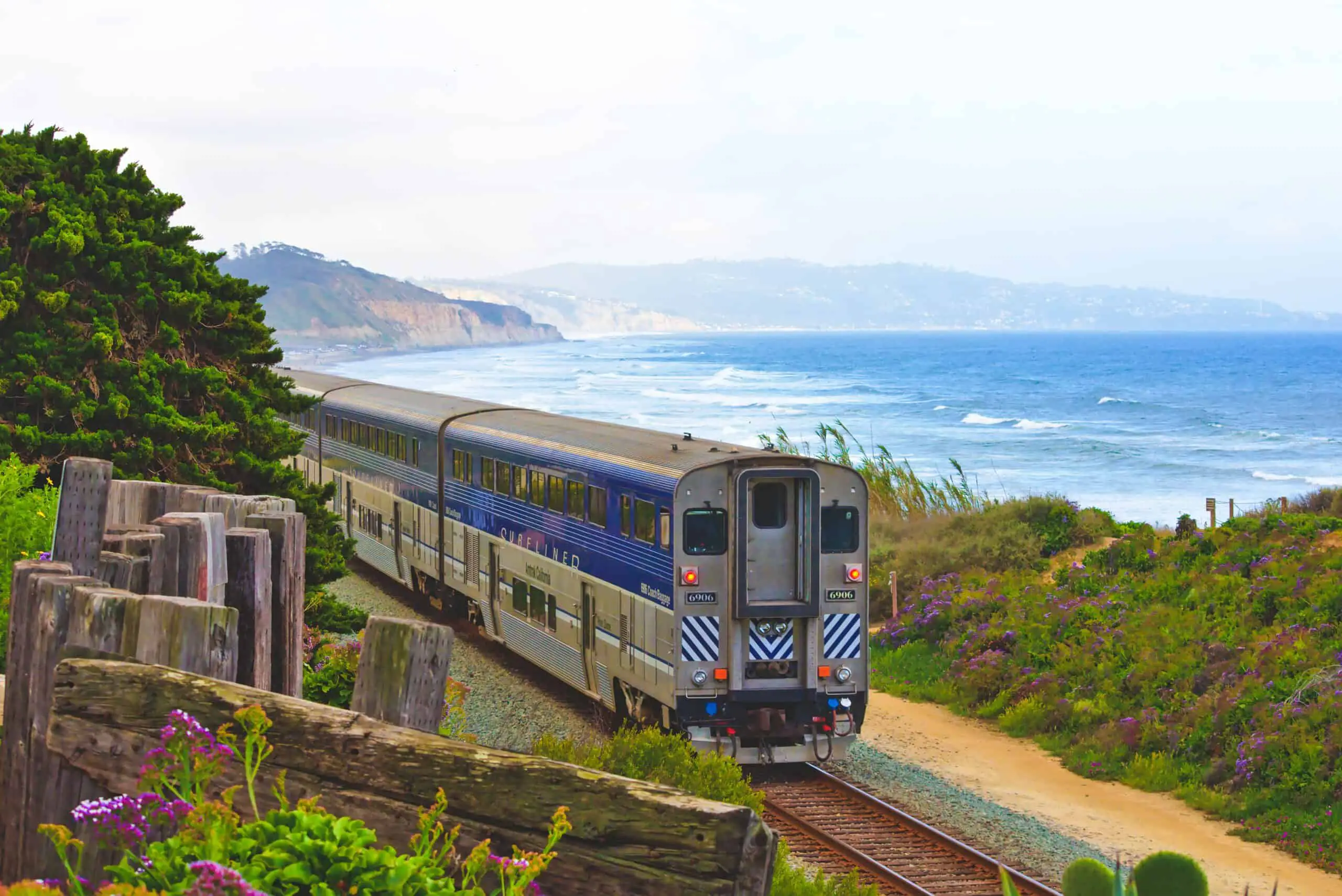Amtrak is one of the oldest train services in the United States that has served millions of people over the past 5 decades. Unfortunately, Amtrak has increased ticket prices over the years until they have become more expensive than flying.
Amtrak is more expensive than flying because of the high cost of rail maintenance and several loss-making routes. There are also more popular modes of transportation that people prefer, including cars. They also pay a living wage to their employees.
These issues had plagued the service since 1970 when President Nixon signed the Act that created the Amtrak service. While these are the main reasons, countless others are contributing to its unsustainable costs, and the following segment shall explore them.
Reasons That Make Amtrak Expensive
For people who love traveling and enjoy a worthwhile vacation, Amtrak’s expensive tickets may come as a surprise considering alternative means of transport such as air are significantly cheaper. We shall now delve into the real issues affecting this crucial service and discover what makes the train service quite expensive when it should be ordinarily affordable.
The following are the main reasons causing the train tickets to be as expensive as they are.
High Cost of Rail Maintenance
Like roads, rails also require regular maintenance. Maintaining rail tracks and ensuring they run all year long is quite expensive. America is an old country, and some of these train tracks are falling apart and require extensive replacement.
These works do not come cheap, and the company must invest significant capital and human power in guaranteeing the trains will not derail or get bogged down.
In some cases, the train tracks may be in good condition, but they are in very remote areas, which adds to the cost of maintaining them. Additionally, train services must be halted during maintenance and repairs, disrupting schedules. Covering these costs leads to the high cost of Amtrak tickets.
Flying, however, doesn’t require extensive route maintenance. Nor does it require a lot of equipment maintenance like Amtrak trains require. So airlines can pass those savings on to their customers.
Various Loss-Making Routes

The fact that the government gives Amtrak subsidies is proof enough that they do not make sufficient funds to run their operations. Some routes are loss-making and drain the available funds from profit-making routes. Since the government partly owns the company, it cannot halt its services on these routes.
Profitable routes like the North-Eastern corridor, which connects Boston and Washington DC, give the company significant profits despite covering only 427 miles (687.19 km).
Therefore, the company covers the cost of operating multiple loss-making routes by hiking up prices. These routes might cover twice as many miles, but they don’t carry as many passengers. Consequently, travelers using such popular routes pay more than necessary.
Airlines, however, are also subsidized by the government. But they have different rules about how much they can charge and for what routes.
The Resurgence of the American Car Culture
Americans love their cars, as many Americans own at least a vehicle, with some families owning multiple vehicles. Unlike the Amtrak service, personal vehicles are convenient when going on vacation.
While traveling in your vehicle, you can enjoy the views and stop whenever you want.
You are in full control of the experience, which makes it more reasonable to drive with friends and family than fly or use a train. While the price of gasoline may arise from time to time, driving is a better alternative to using the Amtrak trains for many Americans.
Of course, the same can be said for airlines. However, in most areas, car rental companies are directly on the airport property, making it more convenient for travelers to fly and get their car at their destination airport. Amtrak does not do this.
Introduction of More Popular Modes of Transport
The Amtrak train service was introduced in 1970 when train tracks were the most popular means of inter-state travel. Since then, there have been significant strides in the transport industry, and more popular alternatives have been introduced.
Many Americans today prefer to fly to their destinations rather than go by rail. Direct flights are cheaper and faster than they were 50 years ago, and many Americans are abandoning the Amtrak train service.
The company is forced to increase ticket prices to cater to these lost customers or risk going under.
Paying a Living Wage To Employees
Amtrak uses a significant portion of its available resources to pay its employees. The service has not made profits for a while, yet it requires high-value professionals such as engineers whose salaries allow them to do more than barely survive.
The company cannot maintain operations without such professionals’ services, considering it covers more than 21,300 miles (34,279.03 km) of rail track.
Aside from the train drivers, there are other additional people, maintenance professionals, and crew members involved. These employees must be paid monthly even if the company is making losses. As a result, the company recovers some of these costs by charging expensive tickets.
However, airline employees also are paid a living wage but are still able to charge less money per ticket due to the increased savings from other areas as mentioned above.
Customer Amenities
When you fly, you do so because you want to get to your destination as soon as possible due to one reason or another. But when you take the train, you do so because you want to see the country and take in the sites.
If you’re traveling cross-country, you’ll likely be on the train for 3-5 days, minimum. That means that you’ll need a sleeping car, food, and a shower. If you book a sleeping car that comes with a private bathroom and a shower, that’s going to cost you a lot more money than if you were flying.
Your ticket prices, even if you’re on the train for 5-10 hours in the coach car, include the cost of meals and the dining car staff. You also get free wi-fi to power your phone, tablet, or laptop.
Airlines don’t have these amenities because domestic flights don’t take as long per trip. Therefore, you’re not paying as much money for a flight as you would for a train ride. You’re actually paying for amenities.
Best Tips To Make Traveling With Amtrak Affordable
Traveling using Amtrak may seem expensive and beyond the reach of many Americans, especially if they travel across the country. However, there are ways you can make your journey cheap and worthwhile.
The following are some of the ways one can save money on Amtrak tickets:
- Advanced booking: The company offers cheaper than normal train tickets for people who book their trains more than 14 days in advance. In fact, if you booked your trip at least 2-3 months in advance, the price would be the same as a plane ticket.
- Traveling with kids: Kids under 12 are offered tickets at half the price. This offer can benefit families traveling with several kids.
- Group traveling: Amtrak encourages people to travel in significant numbers by offering bulk ticket packages. The packages are suitable for vacationers traveling in numbers.
- Destination research: Some destinations are cheaper during the low peak seasons. Thus, plan your holiday well in advance to enjoy cheap tickets during off-peak seasons.
- Travel coach: If you can handle sleeping upright in a coach seat or your trip is less than 24 hours, then you can save money by booking a coach car. Sleeping cars cost at least 5 times more than a coach car, but you get many of the same amenities.
Conclusion
Amtrak may be an expensive mode of transport, but it covers a significant part of the continent. And if you book well in advance, you’ll find that the price is about the same as a plane ticket.
For some destinations, predominantly rural areas, it is the best means of transportation. Amtrak is still a viable means of transport for travelers with a lot of luggage, traveling in big groups, and those who enjoy the feeling of a train ride.
Sources
- Amtrak: Amtrak Discounts & Deals
- Amtrak: National Fact Sheet FY 2016
- National Academies: The Amtrak Story
- Amtrak Guides: AMTRAK VS FLYING: PROS AND CONS
- Zip Recruiter: Train Engineer Salary
- Amtrak: The Northeast Corridor
- Droom: Public Transport vs Personal Vehicle
- Railway Pro: The high maintenance cost of railway track equipment imposes new solutions


